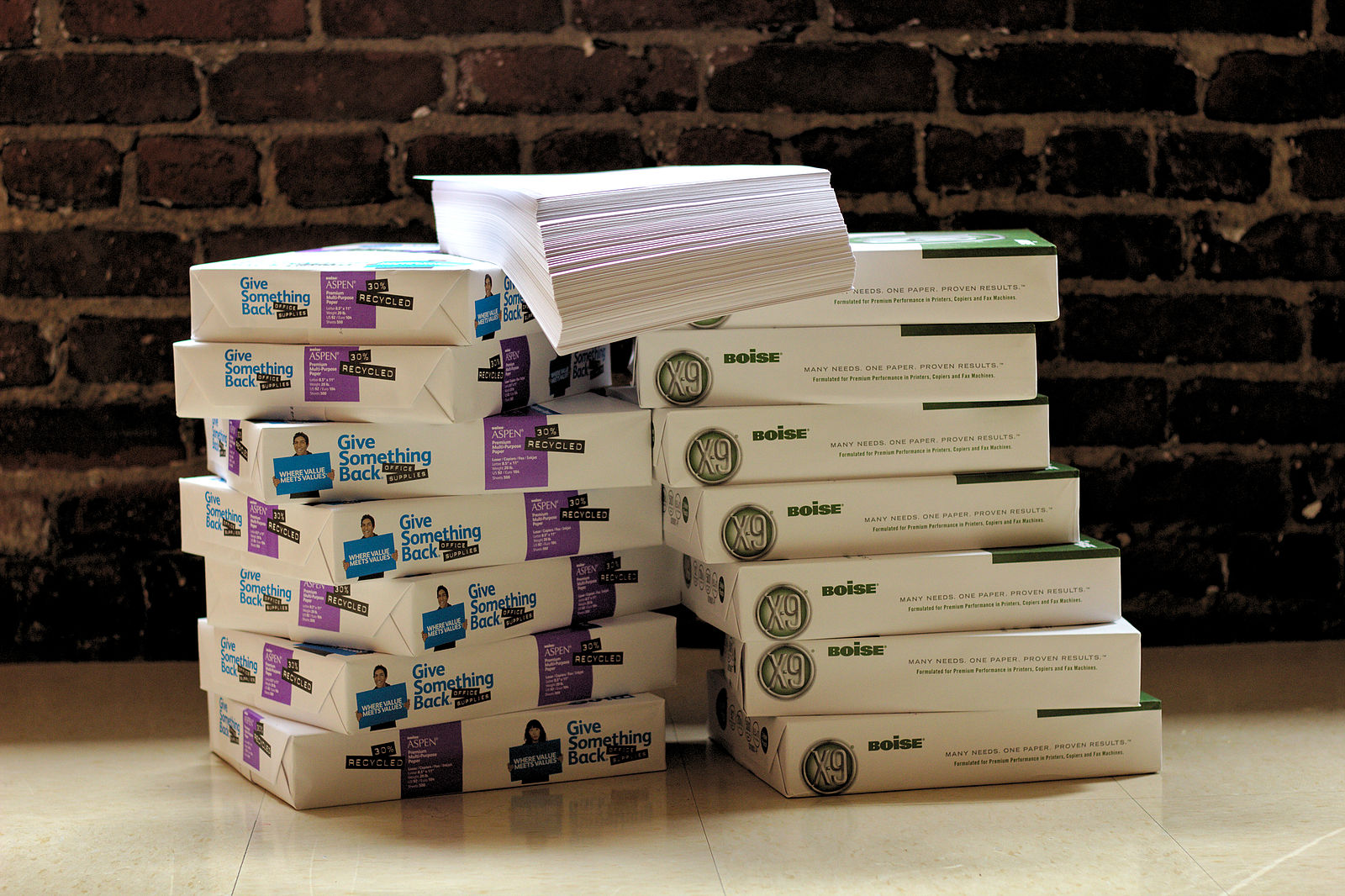Chances are you’ve never had deep, lingering thoughts regarding your copier paper. Many businesses purchase whatever is on sale and don’t think twice about it (until their devices begin malfunctioning, that is).
Unless you’re a paper expert, like James Gilman with Perimeter Office Products, you wouldn’t realize that the paper you select actually dramatically affects your device’s performance and output. Moreover, as was discussed in our previous blog, Why Paper Quality Matters: Part 1, your paper type can also lead to jamming and excessive device malfunction.
So while you may think purchasing discount paper at your favorite wholesale establishment is the way to go, we are here to set the record straight. In order to save yourself the hassle of dealing with device repairs, it is imperative that you choose the appropriate copier paper for your particular needs.
Paper Weight
Measured in pounds, and in grams per square meter, paper weight refers to the weight of the paper (shocker, right). Many offices will have a need for more than one paper weight, depending on the type of documents being utilized. As Gilman points out, “[I]n order to properly select your paper, it is crucial to recognize exactly what needs printed. Are you printing internal or external documents? Is your paper staying in the office, going to record keeping, or is it getting handed to customers in sheets, documents, or reports?”
If you are printing internal documents, sticking to a basic economy sheet will suffice. Gilman recommends opting for a name brand 20lb, 92 bright sheet. Generally speaking, a 5,000 sheet case, (10 reams of 500 sheets) should retail around $45-$50 per case. When printing external documents, or customer facing, you may want to use a heavier (or brighter) sheet.
Paper Size
There are a few standard paper sizes used in the United States. These include letter (8.5”x11”), legal (11”x14”), tabloid (11”x17”) or ledger (17”x11”), and statement (5.5”x8.5”). Discount paper may be cut a few millimeters off, which doesn’t sound like much, but can lead to misfeeds and paper jams. When the printer can’t detect the proper paper size, errors will occur. Often times improperly sized paper moves around inside the paper tray, leading to device issues.
It is also advisable to keep an eye out for inaccurate cuts and rough edges. As always, report any paper concerns to your supplier or manufacturer. If you’ve received a bad product, it is essential to insist on a replacement or refund.
Paper Type
Beyond weight and size, paper type is another factor to consider. This includes paper grain, color, smoothness and coating. Similar to wood, paper grain refers to the direction the fibers run within it. Paper smoothness is measured via the Sheffield Scale, with lower numbers being smoother. The smoother the paper, the more chance of paper jams, but smoother paper also produces exceptional image quality, particularly with photos. Coated paper is essentially raw paper treated with chemicals, to alter the composition and characteristics of the paper. Coated paper can sometimes cause issues with MFPs, so it’s wise to consult your device manual before using. Typically coated paper can be used in MFPs simply by adjusting print driver settings and the paper tray.
Paper Quality
While the majority of paper is made from pulp and water, every paper mill will have their own “recipe” for making paper. Not as common, but some paper is made from cotton and even recycled materials, as well. The paper manufacturing process will vary greatly, throughout the industry. Choosing to purchase from a reputable and reliable paper vendor will enhance reliability and quality.
“Understand there is more consistency with buying from a single mill, or single source. Going this route will enhance the user experience, instead of chasing the ‘spot buys’ and receiving different cuts, with various pulp and case consistencies,” states Gilman.

If you have questions about the type of paper that will work best for your printer fleet, contact AOT for recommendations. We also highly suggest getting in touch with the king of all things paper, James Gilman at Perimeter Office Products, for customized, expert advice.





